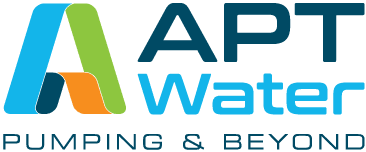The reliability of your pumping systems is an absolute necessity to your site’s overall efficiency and the task at hand.
If you’re unsure if your pump is meeting its full functional capacity, there may be lubricant contaminants to blame.
Want to know 3 lubricant contaminants that affect pump reliability?
Read more from the Perth pump experts at APT Water, to find out.
1. Air contamination
Air entrapment (such as bubbles) in your pump’s lubricating oil can cause the creation of layers of foam, ultimately leading to the overflow of the reservoir.
As excessive bearing wear is caused by decreasing the load-carrying ability of the lubricant, this can ultimately lead to a shorter bearing life.
Not only this, but premature oxidation and/or lower lubricant flow to the bearings may just present themselves, as well.
Here’s how you can prevent air contamination to your pump lubricant:
- Increase reservoir temperature but be mindful of not impacting oil life. Oil temperature should be kept below 60 degrees Celsius at all times.
- Maintain proper oil level in the bearing housing
- Inspect and tighten all fittings, including joints
- Carefully apply silicon antifoam only in turbulent systems with supplier assistance
- Filter and change the oil at regular intervals and consider decreasing the viscosity one grade, as well
- Check that the vents are functioning at proper operation
- Replace any clogged filters.
For further advice, contact your Perth pump supplier for professional expertise and solutions.
2. Water contamination
Bearing housings “breathe” in that the temperatures rise, causing air volume expansion, decreasing temperature at night or after shutdown, resulting in air volume contraction.
Inadequately-sealed or open bearing housings allow for this back and forth movement, which is both moisture and dust-laden, ambient air.
Moisture (aka water contamination) can lead to:
- Premature failure or excessive wear and tear of the pumps
- Bearing or other machine element corrosion
- Premature oxidation of the lubricant.
Here’s how you can prevent water contamination to your pump lubricant:
- Hermetically seal the bearing housing if possible
- Install a moisture detection unit
- Inspect heat exchangers, steam coils and/or packing for leaks, regularly
- Don’t allow water to fall onto equipment
- Keep hatches and covers on reservoirs closed
- Train your operators in the proper use of clean up hoses.
-
Contamination by particulates
Dirt is widely regarded as the most destructive lubricant contaminant that can compromise pump reliability. The best way to stop the wear and tear damage of dirt and other particulates is to prevent it in the first place.
Here’s how you can prevent dirt contamination to your pump lubricant:
- Install and apply proper storage and handling procedures
- Again, keep reservoir hatches closes
- Utilise air filter-breathers on all reservoirs
- Clen reservoirs before introducing new oil
- Filter sail oil with the use of a filter cart of off-line filtration.
Essentially, lubricant oil in any pump’s bearing housing needs to be kept clean to ensure optimum pump reliability.
For the latest (and greatest) in innovative pumping technologies in Western Australia, the expert team at APT Water have your pumping needs, across various market sectors, covered.
Looking for a professional Perth pump supplier you can always count on?
Look no further than APT.
Contact us today and experience true pumping efficiency.



